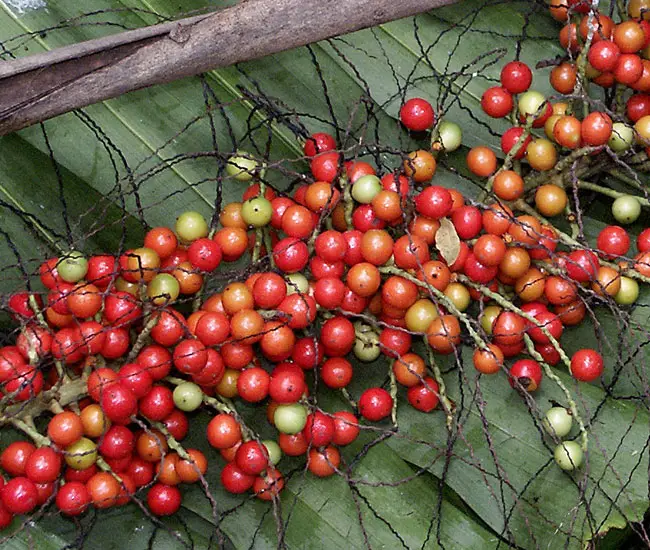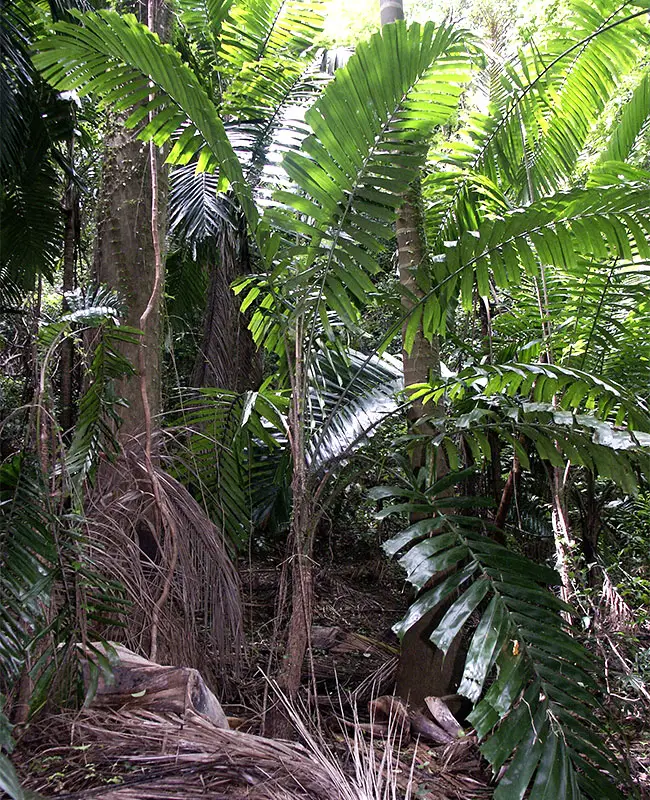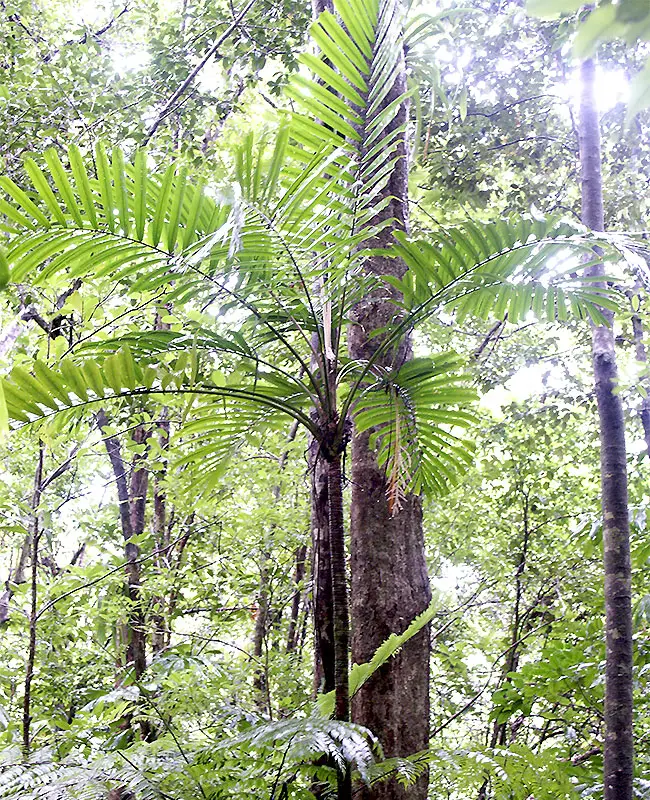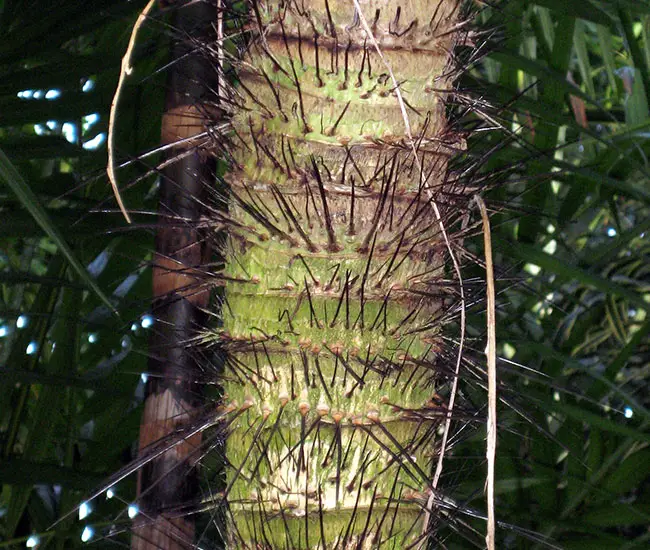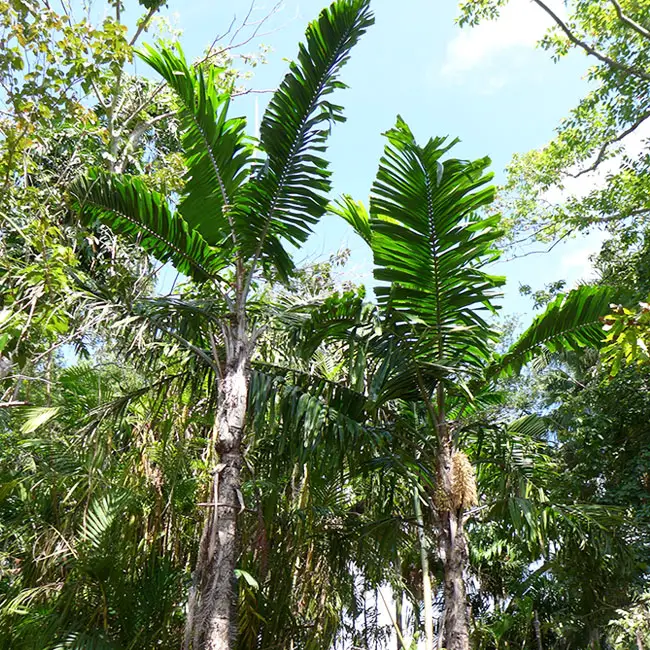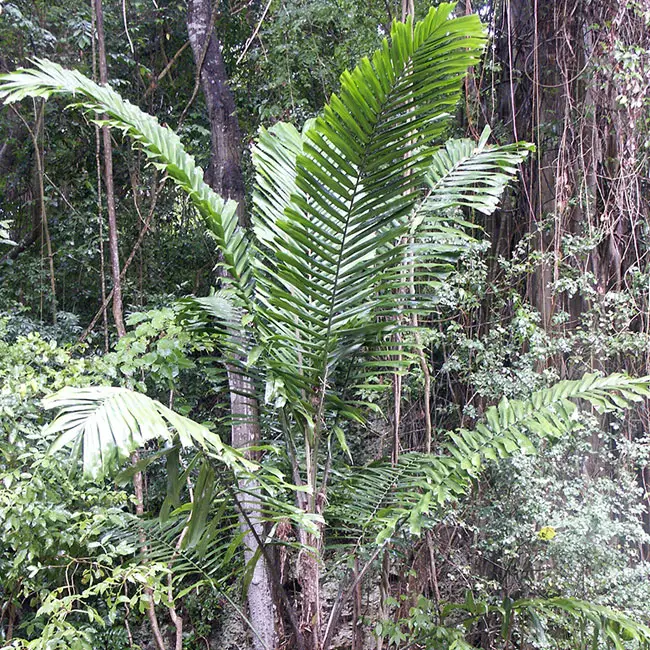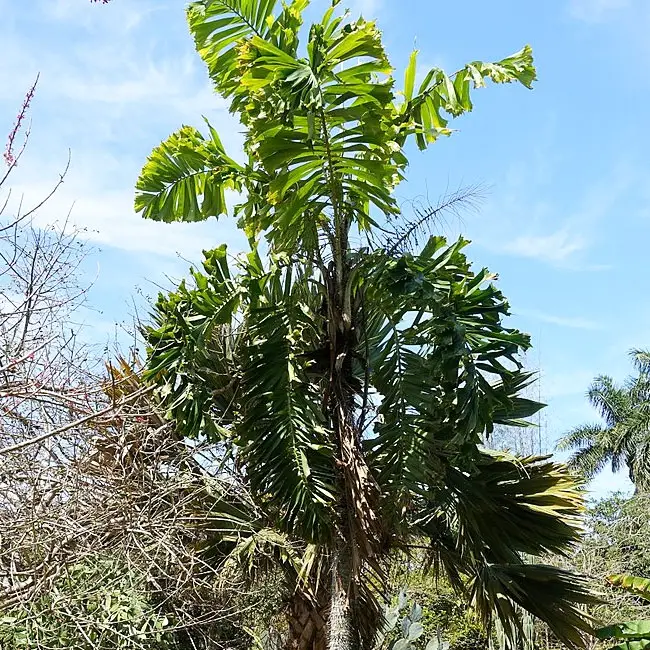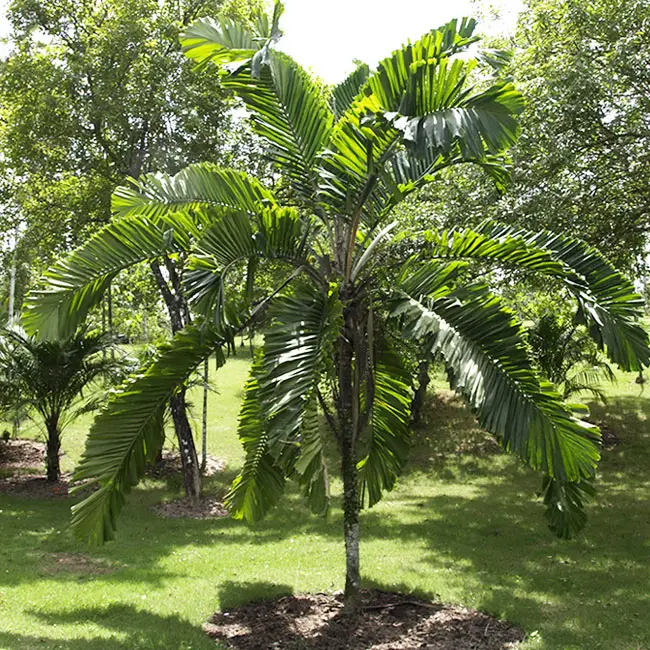
The Macaw Palm Tree, scientifically known as Aiphanes minima, is indigenous to the insular Caribbean, spanning from Hispaniola to Grenada.
This palm exhibits a notably spiky character, boasting a solitary brown trunk adorned with arching, feathery fronds. It is essential to emphasize that the Macaw Palm should be cultivated exclusively outdoors.
Quick Facts:
| Scientific name: | Aiphanes minima |
| Common names: | Macaw Palm, Devils Palm, Aiphanes Species, Bitten Palm, Spiny Palm |
| Origin: | Native to the insular Caribbean from Hispaniola to Grenada. |
| Growth Rate: | Slow to Moderate. Up to 20 – 30 ft tall and 10 – 15 ft wide. |
| Cold Tolerance: | USDA Zones 10a (30 to 35 F) to 11 (above 40 F). |
| Light Req: | Partial shade to Full sun. |
| Water Req: | Moderate. |
| Soil Req: | Widely adaptable. |
| Fruit: | Yes. Red. Not edible. |
| Propagation: | By seed. |
Macaw Palm Appearance
This palm tree showcases a singular brown trunk enveloped in lengthy black spines. Atop this trunk, you’ll find a crown of dark green pinnate leaves, reminiscent of feathers, featuring two rows of leaflets arranged symmetrically on either side of the leaf blade.
The stems are likewise cloaked in black spines. The upper surface of the leaves bears spines measuring approximately 1/2 inch in length, while the lower surface may not always exhibit these spines. The leaflets themselves are narrowly linear, adding to their overall appearance of being ruffled.
Flowers and Fruits of the Macaw Palm
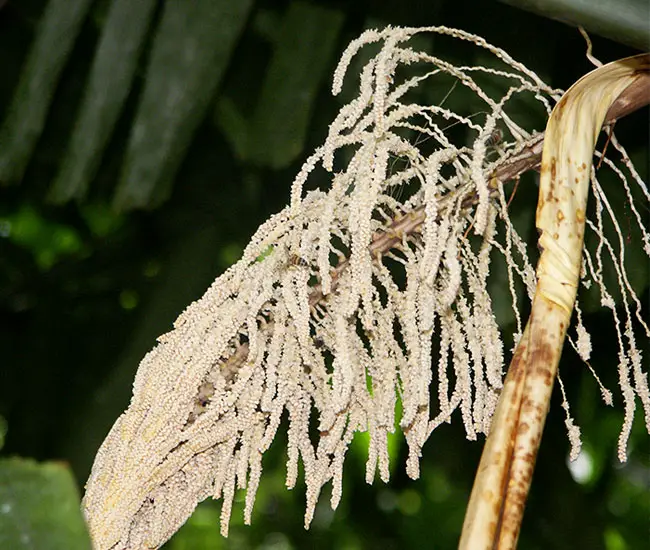
The Macaw Palm produces creamy white flowers endowed with a delightful sweet fragrance. Interestingly, both male and female flowers emerge on the same spiny inflorescence.
Following the flowering phase, green fruits make their appearance, transitioning to a vibrant red hue when fully ripe. These fruits are roughly 1/2 inch in diameter and house a single seed within.
Caring for the Macaw Palm
The Macaw Palm can achieve a gradual height of 20 to 30 feet and a width spanning 10 to 15 feet. It thrives in warm tropical climates and can endure cold conditions only down to 30°F.
Successful cultivation can be attained within USDA Zones 10a (with temperatures ranging from 30 to 35°F) to 11 (above 40°F).
This palm tree flourishes whether in partial shade or full sun and thrives in well-drained, moist soil. When handling the Macaw Palm, exercise caution due to its sharp spines.
To avert nutritional deficiencies, it is advisable to apply a high-quality palm fertilizer with a continuous-release formula twice a year during the growing season.
Propagation of the Macaw Palm is typically achieved through seeds.
Macaw Palm Tree Pictures
